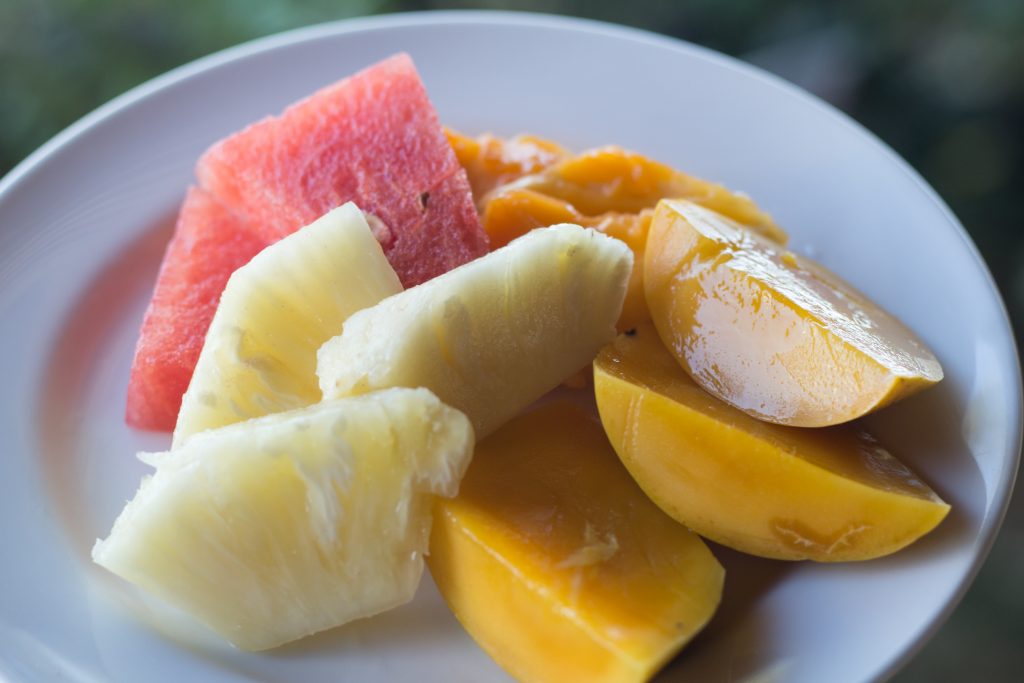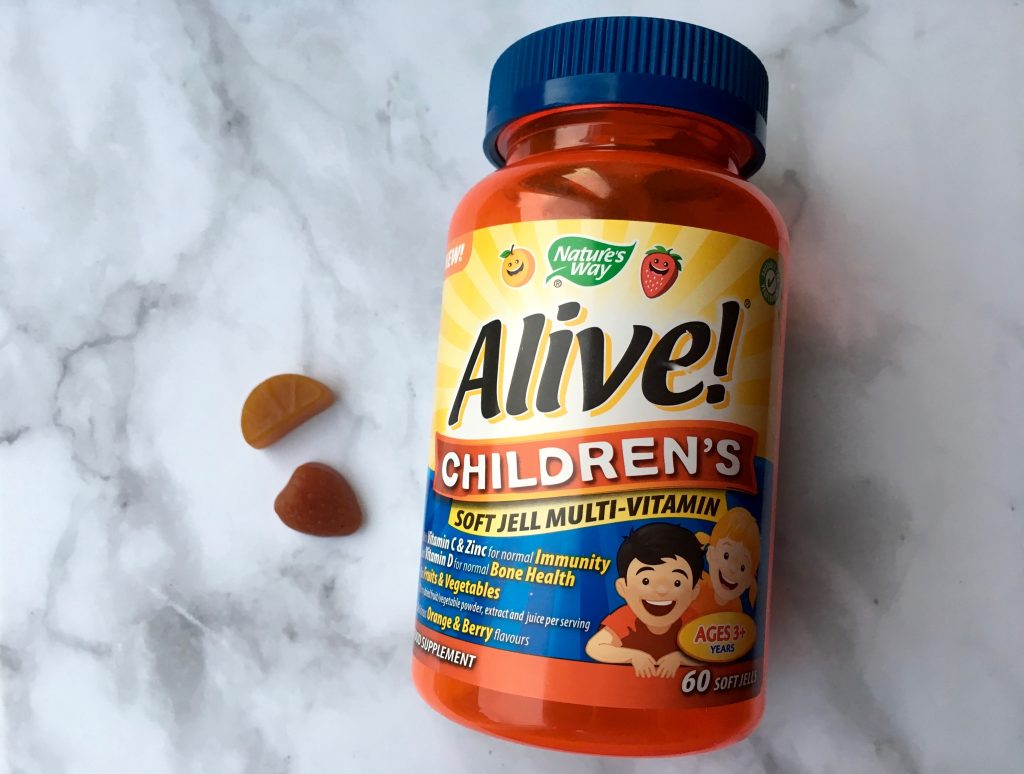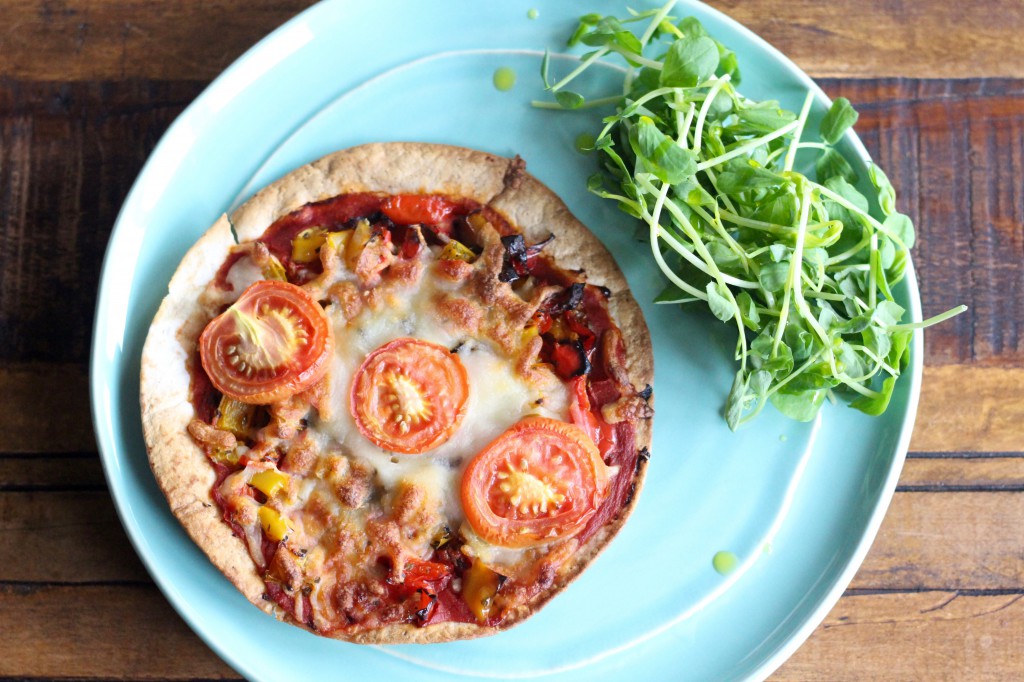
Earlier this year the media went crazy over a study that showed that eating ten portions of fruit and vegetables a day significantly reduced the risk of heart disease and cancer. The study showed that although eating 2.5 portions of fruit and vegetables a day is good, MORE is better, and up to ten 80g portions of fruit and vegetables a day is optimal for health.
The Government recommendation of eating at least five portions of fruits and vegetables a day hasn’t changed, but neither has the fact that children still aren’t eating enough: The National Diet and Nutrition Survey’s latest report (September 2016) shows that children are on average only eating three portions of fruit and vegetables a day, and this has not increased in the six years that the survey has been running. In fact, only 8% of children (aged 11-18) are meeting the recommended five daily portions of fruits and vegetables.
So what can we do to help? In this blog post I will cover:
- My Top 10 Tips to help Children Eat their 5 a Day
- How to Deal with Fussy Children
- My Opinion on Children’s Multivitamins – featuring Alive!
- Healthy Eating for Children Summary
I really hope you find it useful!

- So what can we do to help Children to eat more Fruits and Vegetables?
Here are my top 10 tips:
- Get kids involved in preparing and cooking food – It’s a great a way of talking about fruit and vegetables and their benefits such as vitamins, minerals, antioxidants and fibre. Even if they just watch initially, it will help to get them interested in knowing more about what they are putting inside their bodies.
- Make fruits & vegetables fun – You could make faces when presenting foods, for example when using vegetable toppings on a pizza or when displaying cut up fruits on a plate. It’s important to make meal preparation and eating both a relaxed and enjoyable time.
- Have healthy, easy to eat snacks on hand that include fruit or vegetables – Such as cheese and cut up apple, carrot sticks and hummus or yoghurt and berries. Easy to eat snacks are useful to have on hand when hunger strikes and these all count towards one of their 5 a day.
- Have banana nice-cream for dessert – Peel, chop and freeze ripe bananas in a sandwich bag before blending into a delicious banana ice-cream dessert. You could even add honey, chocolate chips or peanut butter for an even sweeter treat. Bananas contains natural sugar and lots of fibre; they beat a tub of sugary ice-cream from a nutrition point of view hands down!
- Serve fruit smoothie ice-lollies – Swap sugary ice-lollies for 100% fruit lollies which you can make at home. For a creamier treat you can mix together natural yoghurt with honey and pieces of fruit (such as drained and chopped tinned peaches or pears) and freeze the mix into lolly moulds for when the sun is out – as pictured [here]!
- Make the most out of sauces – If you have fussy kids don’t forget that you can hide vegetables in other foods. You could blend peppers, onion or courgette into a tomato sauce; they’ll never know!
- Mash banana or strawberries into porridge – It’s a naturally way of adding both colour and sweetness to a bowl of oats.
- Get creative – You could chop up fruit and add them to a stick for healthy fruit kebabs or make the shape of a flower out of round vegetable pieces such as carrot and cucumber. These are both fun and easy to eat too.
- Typically ‘unhealthy foods’ such as pizza can also be given a makeover – You could make a tortilla pizza with a tortilla as the base, passata as the tomato topping and grated mozzarella and small pieces of vegetables such as mushrooms for the topping. Roasting the vegetables first will not only to make them taste better but will make them easier to eat too.
- Use a rewards chart – To encourage new or more fruits and vegetables you could start a rewards chart where kids receive a sticker for trying something new or when they eat their 5 a day.
- What about Fussy Children?
If you’re worried that you’ve got a food neophobic (reluctant to eat) or fussy eater (lack variety in their diet), encourage them to try just a mouthful of everything on the plate, rather than all of it, and remember to praise your child for trying a new food. Never force a child to eat though as this can make fussy eaters worse and can increase a child’s anxiety at meal times.
Children’s anxiety levels may increase if they feel that they have to eat an entire plate’s worth of food, so try not to enforce the ‘clean your plate rule’. If children say they are full simply remove the plate (after 20-30 minutes) without any fuss saying that they can have more later if they want it.
Don’t feel pressured into offering an alternate food; parents may offer preferred foods such as chocolate if the main course isn’t eaten, but this could reinforce future negative behaviour; the child is being rewarded for not eating their meal in their eyes! It’s okay to offer the second course though, even if they don’t finish all of the first. Healthy second course or dessert options include yoghurt and fruit or banana nice-cream.
- Do Children need Multivitamins?
The Department of Health recommends that all children from the age of 6 months to 4 years are given daily vitamin supplements containing vitamin A, C and D. Specifically, children aged 1 to 4 years old should be given a daily supplement containing 10mcg of vitamin D (also known as the sunshine vitamin). Children aged over 5 are encouraged to take a supplement containing 10mcg of vitamin D during the autumn and winter months; provided that they play outside in the sunshine in the spring and summer months i.e. from March to October.
Although children should ideally be getting all of their nutrition through their food, a multivitamin can act as an ‘insurance policy’ to make sure that they are getting all of the micronutrients that they need on a daily basis; we know it’s not easy to get kids to eat even a basic range of vegetables, let alone all the colours under the rainbow!
I for one know how hard it is to remember to take a daily tablet which is why I personally prefer taking a chewable multivitamin that tastes good. Alive! make multivitamins for both adults and children alike and they are made with orange and berry natural fruit flavours. I used to take a chewable multivitamin when I was a child (I didn’t always have the love for vegetables that I have now!!) and would gladly give my future children Alive! Children’s Soft Jells as they contain optimised levels of all the most important vitamins and minerals including Vitamin C and Zinc to support normal immunity and Vitamin D to support normal bones.

- Summary
As a general rule, children should aim to include the following food groups in their daily diet:
– At least five portions of a variety of fruit and vegetables (a portion is classed as the size of their hand) for vitamins, minerals and fibre.
– Starchy foods for energy, including as potatoes, bread, pasta and rice; choose wholegrain varieties if possible for extra goodness.
– Milk and dairy foods such as yoghurt; choose plain yoghurt and sweeten with berries rather than buying sugary options.
– Foods that are good sources of protein, such as meat, fish, eggs, and/or plant based options such as beans and lentils.
– Fats are needed in the diet to meet high energy requirements. Preferred sources are from dairy, meats and avocados as well as nuts and seeds which can be ground up and added to cereals or yoghurt to avoid choking. Use only small amounts of healthier fats in cooking such as olive oil or rapeseed oil and limit foods such as sweets, chocolate and crisps.
As per the department of health guidelines, all children should be given a supplement containing 10mcg of vitamin D (especially in the autumn and winter months), with children aged 6 months to 4 years taking vitamins with A and C too. For more advice on healthy eating for children check out this [BDA Food Facts Sheet].

I really hope you find this blog post useful, do let me know if you have any other tips on getting children to eat more fruit and vegetables!
*The top two and bottom images are by Fields Photography London. This blog post was written in collaboration with Alive!. Please note that collaborations do not influence advice given. I personally take a multivitamin containing vitamin D as a way of ensuring that I reach my recommended daily nutrient intakes however I would recommend that you speak to your own doctor or dietitian for advice. I do not promote products featured over others that are not featured. Please read my disclaimer page for more information.



Awesome post Nic. A good one to prep me for life ahead of me when baby gets older. I think the vitamin supplements now start from 1month old till 4yrs (5 drops daily ) because my baby has been taking one for the last 6month of her life. Thanks again for these well thought out research and post.
Aw thank you so much! Ah fab, yes I should add that of course every child is different and the advice for babies will be given by the GP or midwife! So glad you found it useful 🙂